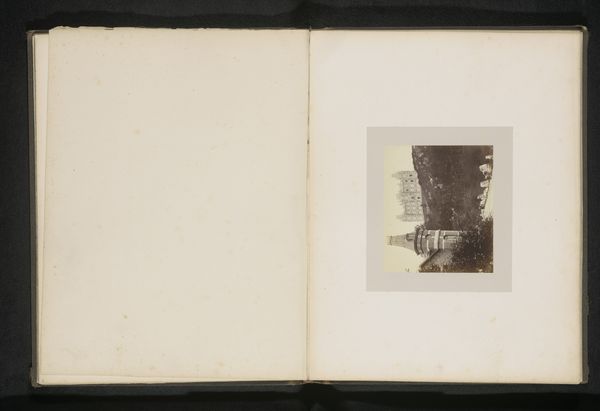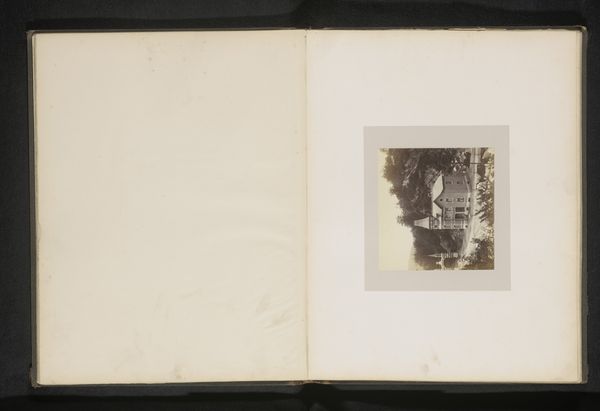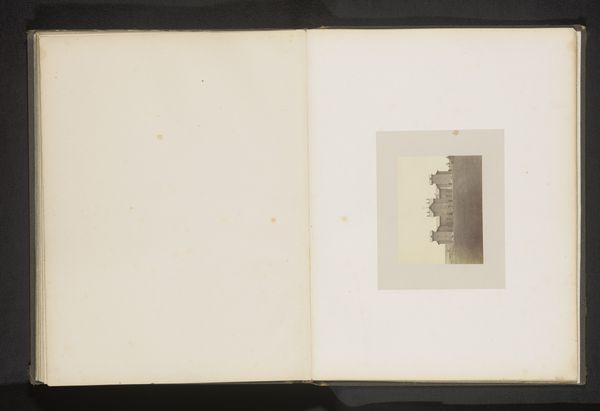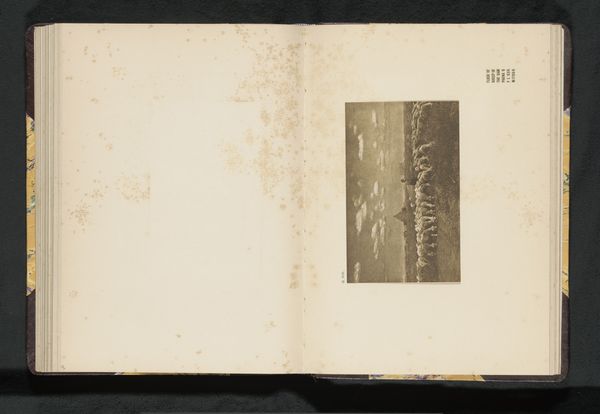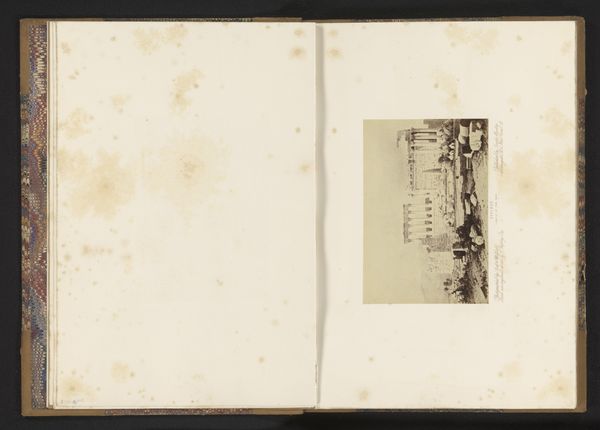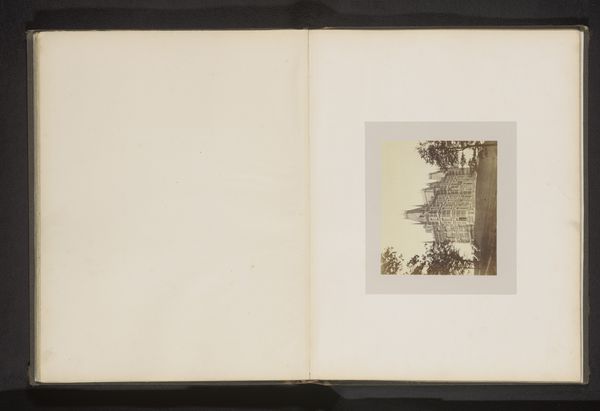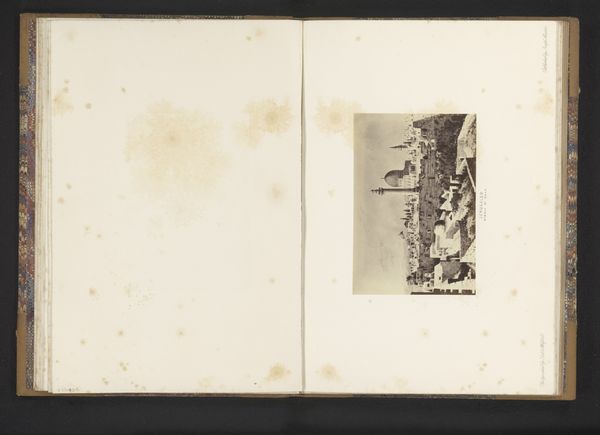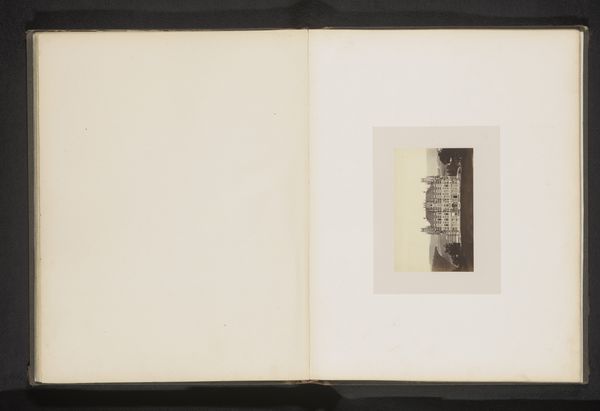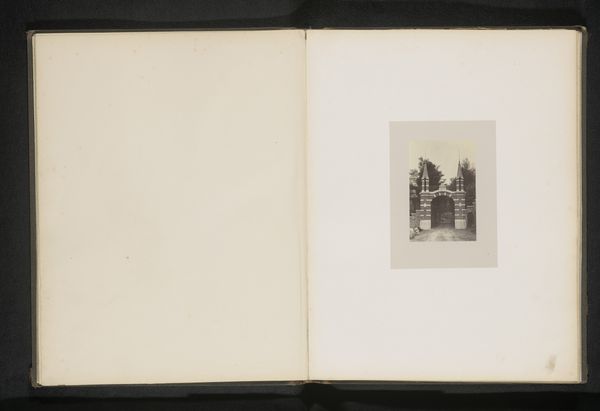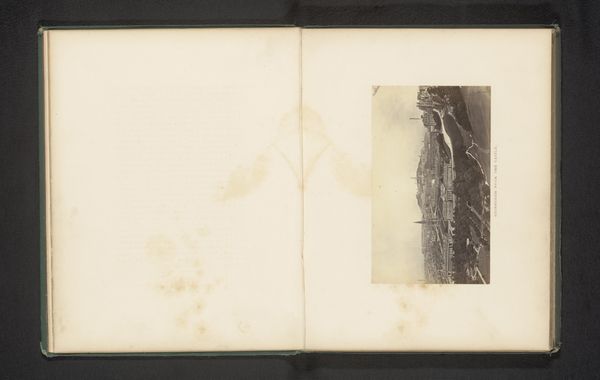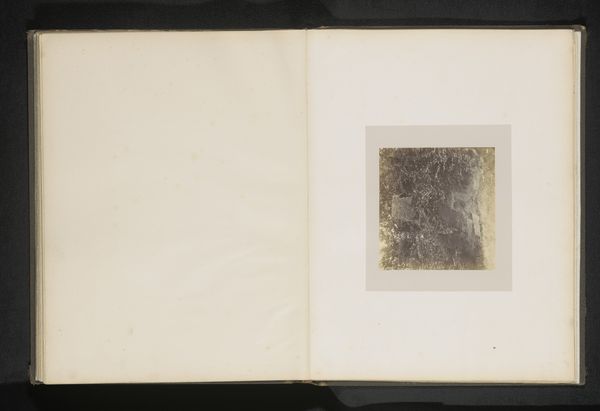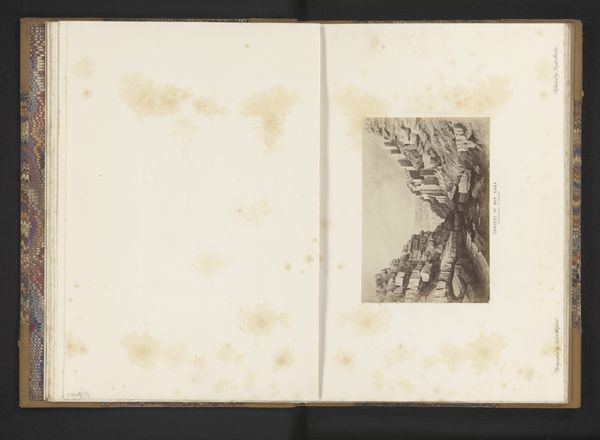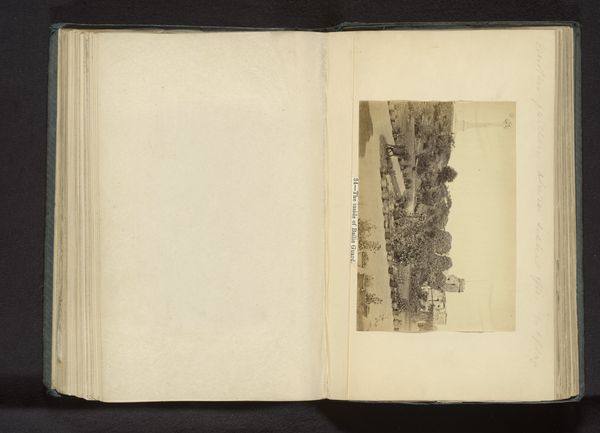
Gezicht op een stenen brug nabij Château de Marlagne te Wépion before 1867
0:00
0:00
photography, albumen-print
#
16_19th-century
#
landscape
#
photography
#
albumen-print
#
realism
Dimensions: height 128 mm, width 102 mm
Copyright: Rijks Museum: Open Domain
Curator: Before us, we have an albumen print from before 1867 by the studio of Ghémar Frères, titled “View of a Stone Bridge near Château de Marlagne in Wépion.” It's currently held here at the Rijksmuseum. Editor: My first impression is of serenity, almost melancholic. The scene feels timeless, doesn’t it? The tones are so muted. The crumbling bridge especially holds such weighty emotion for me. Curator: Indeed. Ghémar Frères operated during a pivotal era for photography, moving from documentation to artistry. Images like this helped shape the visual culture and perceptions of specific locations in Europe. The subject itself speaks volumes – castles were markers of power and also status anxiety at that time. Editor: That's fascinating, to consider how photography bolstered established authority while simultaneously questioning it through increased circulation! This image possesses this visual quietude with its choice of details. I find it particularly intriguing that bridges serve, symbolically, as liminal spaces—connections between distinct realms and transitions in time. Curator: The deliberate realism that marks the work reflects a period captivated by authenticity but also struggling with it. It suggests to a bourgeois class on the move that progress, and perhaps power, resides in connecting more profoundly to regional culture. Tourism, photography, and the railroads all fed each other. Editor: Absolutely. I'm also drawn to the muted palette of this print. It reminds us that color wasn't yet part of photography. Everything hinges on capturing the play of light, shadow and texture. That silvery quality contributes significantly to the symbolic sense of memory at play. Curator: The technical choices reflect their ambitions, for sure. By favoring specific views or historical structures, photography amplified existing hierarchies and legitimized contemporary narratives through "objective" representations. Even landscape gets used! Editor: I see what you mean. Understanding those mechanics enriches our experience, it pushes us beyond mere aesthetic enjoyment. Thank you. Curator: My pleasure!
Comments
No comments
Be the first to comment and join the conversation on the ultimate creative platform.
